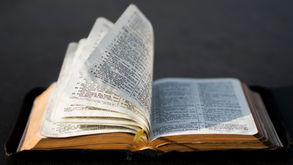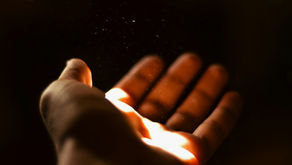Tales of Magnificent Heroism
- Uplifting Words

- Dec 2, 2019
- 6 min read
The impact of the Báb and His followers on writers and artists
BY ROBERT WEINBERG

Accounts of the meteoric rise, captivating claims, and mysterious public execution of the Báb—born 200 years ago in Shíráz, Iran—not only made a profound impression on the land of His birth, but also much further afield. From the distant reading rooms of Indian and English seats of learning to the salons of Paris’s Left Bank, writers and artists were enthralled by the tragedy of the Báb’s life and the appalling treatment meted out to His followers by the fanatical authorities of the time. This concise survey explores how this particular episode in humanity’s religious history resonated so strongly through the decades that followed.
Observers of the Bábí movement
During the nineteenth century, exotic stories and images from the Orient exerted a peculiar fascination on European minds. There were those, such as the British statesman Lord Curzon, who were impelled to make the journey east, motivated by imperialist ambitions. Others, however, including the decidedly anti-imperialist Edward Granville Browne of Cambridge University, genuinely identified with the cultures they discovered and returned with a new understanding of the potentialities of the peoples they encountered. One writer has maintained that the political theme of Europe regenerating a lifeless Asia had its literary and artistic counterpoint in the thought that the less sophisticated world overseas might be able to rejuvenate a greying Europe.
The Comte de Gobineau’s Religions et Philosophies dans l’Asie Centrale (1865)—with its obvious parallels drawn between the life and martyrdom of the Báb with that of Jesus Christ—was the most influential volume in carrying the story to Western minds. The English poet and cultural critic Matthew Arnold, in A Persian Passion Play, wrote that the chief purpose of Gobineau’s book was to give a history of the career of Mirza Ali Mahommed…the founder of Bâbism, of which most people in England have at least heard the name. The notion that most people in England, in Arnold’s view, were aware of the Báb indicates how deeply His fame had penetrated into far-off societies.

An encounter with Gobineau’s text also launched Browne on his quest. His only visit to Iran in 1887–88, recounted in A Year Amongst the Persians (1893), lit a fire which…would prove inextinguishable. The memoir of his sojourn did much to familiarize English readers with the Báb, His gentleness and patience, the cruel fate which had overtaken him, and the unflinching courage wherewith he and his followers, from the greatest to the least, had endured the merciless torments inflicted upon them by their enemies.
A. L. M. Nicolas, a French scholar born in Iran, was also intrigued by Gobineau’s work. Nicolas’s research, encompassing translations of several of the Báb’s major Writings, additionally contributed much to raising awareness of His life and teachings: My reflections on [The Seven Proofs by the Báb] that I had translated, filled me with a kind of intoxication and I became, little by little, profoundly and uniquely a Bábí. The more I immersed myself in these reflections, the more I admired the greatness of the genius of him who, born in Shíráz, had dreamt of uplifting the Muslim world… Nicolas maintained a lifelong admiration for the Báb, concluding: Poor great Prophet, born in the heart of Persia, without any means of instruction, and who, alone in the world, encircled by enemies, succeeds by the force of his genius in creating a universal and wise religion…. I want people to admire the sublimity of the Báb, who has, moreover, paid with his life, with his blood, for the reforms he preached.
Poetic responses in Iran
The power of the written or spoken word is given great emphasis in the Bábí and Bahá’í scriptures. The Báb Himself cited a tradition, Treasures lie hidden beneath the throne of God; the key to those treasures is the tongue of poets. Among the early followers of the new faith were such distinguished poets as Táhirih, Varqá, Na’ím, and ‘Andalíb.
Accounts of the Bábís generated an almost immediate response from writers in Iran itself. Mírzá Habíb-i-Shírází, known as Qá’iní, one of the country’s most eminent poets, was reportedly the first to extol the Báb in his work. The news of more than 300 Bábís under siege at the Shrine of Shaykh Tabársí who, despite their lack of military expertise, held off the forces of the Sháh’s army for almost a year—notably aided by an exceptionally devastating display of swordsmanship by the Báb’s first follower Mullá Ḥusayn, who was but a religious scholar—evoked the enthusiasm of poets who, in different cities of Persia, were moved to celebrate the exploits of the author of so daring an act. Their poems helped to diffuse the knowledge, and to immortalize the memory, of that mighty deed. In the West, reports of the beleaguered Bábís were extensively covered by the press, as well as described in travelogues by Robert Binning, Lady Sheil, and Jane Dieufloy.
Táhirih, Qurratu’l-‘Ayn
The poet known as Táhirih, or Qurratu’l-‘Ayn, the first woman to follow the Báb, was rare among her gender at that time for her education and erudition. This ghazal, known as her signature piece, conveys her yearning devotion to the Beloved:
I would explain all my grief Dot by dot, point by point If heart to heart we talk And face to face we meet. To catch a glimpse of thee I am wandering like a breeze From house to house, door to door Place to place, street to street. In separation from thee The blood of my heart gushes out of my eyes In torrent after torrent, river after river Wave after wave, stream after stream. This afflicted heart of mine Has woven your love To the stuff of life Strand by strand, thread to thread.
More than any other element of the Bábí experience, it was the resolve and courage of Táhirih that seems to have excited the imagination of writers. Numerous volumes have been written about her—notably recalling her singular act of publicly removing her veil—not only in Persian, Arabic, and English but extensively in Urdu. Around 1870, after Bábís travelled to Mumbai, Táhirih’s story and poetry came to be well-known in the Indian sub-continent. The influential Punjabi-born poet, politician and philosopher Allama Muhammad Iqbal listed Táhirih among those whose songs bestow constancy to the souls because their songs derive their heat from the universe of inner-heat. In his Javid Nama (1932), Iqbal lists Táhirih as one of three martyr-guides.
Think you not Táhirih has left this world. Rather she is present in the very conscience of her age.


In Europe, as early as 1874, an Austrian novelist and women’s rights activist Marie von Najmajer, had written an epic poem, Gurret-ül-Eyn, believed to be the first composed in a Western language in honor of the new religion. Four years later, William Michael Rossetti mentioned both the Báb and Táhirih in a lecture given in various cities about the English poet Shelley. Rossetti observed that Táhirih had an almost magical influence over large masses of the population, and that the protagonists of Shelley’s poem, The Revolt of Islam, anticipate both her life and that of the Báb. In this work, Shelley seems to have captured the spirit of expectation of that time, foreseeing the imminent advent of two Divine beings:
And a voice said: Thou must a listener be This day—two mighty Spirits now return, Like birds of calm, from the world’s raging sea, They pour fresh light from Hope’s immortal urn; A tale of human power—despair not—list and learn!
Explaining the significance of a verse from Háfiz, the Báb had said, It is the immediate influence of the Holy Spirit that causes words such as these to stream from the tongue of poets the significance of which they themselves are often times unable to apprehend. In similar vein, Shelley had not long before declared that poets are the hierophants of an unapprehended inspiration, the mirrors of the gigantic shadows which futurity casts upon the present, the words which express what they understand not; the trumpets which sing to battle and feel not what they inspire…. The creative forces that accompany the pronouncements of a Manifestation of God—or even anticipate them—thus appear to prompt the spiritual sensibilities of receptive souls.
Throughout the twentieth century, Táhirih’s fame spread further abroad. The journalist and outstanding Bahá’í teacher Martha Root, who penned a monograph about her, noted that, As I have travelled in the five continents, I have seen how her life has influenced women, and men too, throughout the world. A 1960 public sculpture in Baku, Azerbaijan, by Fuad Abdurrahmanov, depicting a woman casting aside her veil, is said to have been inspired by Táhirih. And, as recently as in 2017, Azerbaijan’s National Museum of History held a celebration recognizing Táhirih’s dedication and contribution to the advancement of women. Táhirih is held in high regard, explained Professor Azer Jafarov of Baku State University. She influenced modern literature, raised the call for the emancipation of women, and had a deep impact on public consciousness.
Around the same time that Táhirih made her appearance unveiled at the Conference of Badasht in June–July 1848, the first women’s rights convention in the United States was being held at Seneca Falls, at which was launched the women’s suffrage movement in America. In the estimation of Western women, the acts of Táhirih were interpreted through the lens of their campaign for the right to vote. In Britain in 1911, the Women’s Freedom League newspaper ran a three-part article by campaigner Charlotte Despard titled, A Woman Apostle in Persia. When an English Bahá’í, Mary Blomfield, petitioned King George V in person to ease the maltreatment of imprisoned suffragettes, an American Bahá’í dubbed her the Western Qurratu’l-Ayn.

Copyright © Bahá'í International Community




















